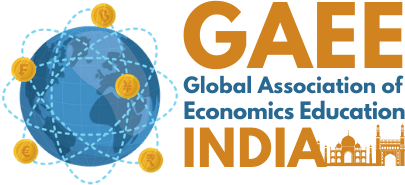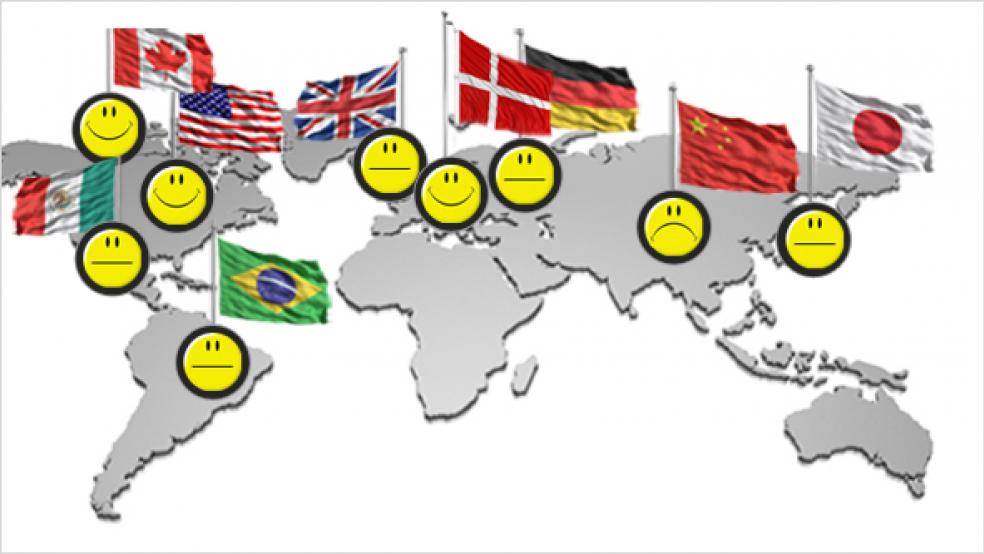Introduction
‘Money can’t buy happiness’, is a saying overly generalised and imposed upon society to create a narrative that stereotypes anyone and everyone, who believes otherwise and pursues money. However, as a society, we neglect the layers of variables such as age, income level, marital status, social interactions that influence perceptions (including social media), education, and health that transit the effect income has on the perceived happiness level of an individual. Parallel to this, runs another, comparatively new school of thought according to which the search for happiness is an important individual and national goal, i.e., positively correlated with a nation’s GDP.
DMU at play: Limit to Happiness
While deciphering the latter of the two schools of thought, the realisation dawns that sustained growth in GDP indicates an increase in happiness levels due to increased income and opportunities that improve people’s standard of living. This surface-level analysis, although true, doesn’t explain the full picture. At low-income levels, an individual’s rising income enables them to buy goods and services necessary for the basics of life, and thus, traditional economic theories about the link between income and utility or satisfaction derived from additional consumption of commodities are strong. Nonetheless, as income crosses a certain threshold, the law of diminishing marginal utility of wealth and income comes into play, and over time, rising income does give happiness, but with diminishing returns.
At the same time, quality of consumption changes as consumers start demanding better quality goods and services when they see more disposable income in their hands. This holds true for individuals (micro units) and economies as a whole (macro units). Princeton researchers Daniel Kahneman and Angus Deaton in 2010 calculated this income threshold up to which people feel happier the more they earn to be $75,000 a year per person (Stieg, 2021).
Theories Explaining Happiness Levels
Another way to look at this is through Keynes’s psychological law of consumption, which states that as income increases, consumption increases but not as much as the increase in income. This explains why Marginal Propensity to Consume or MPC (that measures proportion of additional income consumed), falls when income gets higher and also why the MPC for developed nations is lower as compared to the MPC of developing nations. Suggesting that if consumption is treated as a measure of fulfilment or happiness derived with an increase in income, happiness will continue to increase at a diminishing rate with every unit of additional income until the stage of constant returns begins, as captured by the Easterlin’s effect or Easterlin’s paradox.
Described by Richard Easterlin in the 1970s, the paradox highlights the decline in average happiness levels in the long term, in developed nations even after their economies experienced growth over the previous few decades. Various theories have been developed to explain and criticise this paradox, but it still finds reference in almost all of the literature available on the Income-Happiness relationship because it itself is solely an empirical generalisation (Pettinger, 2022). Why income doesn’t increase happiness in the long run can be possibly explained by the Hedonic theory, which suggests that because of the person getting used to a high income level, their psychological state becomes indifferent from before their high-income earning state of mind, making it next to impossible for an income level to sustain the happiness of a person for a long period (The Hindu BusinessLine, 2021).
Relation between Welfare Indicators and Happiness
Intuitively, the Easterlin’s Paradox could be explained by factors such as increased stress levels, pollution levels, fewer leisure hours, high obesity and blood pressure levels, etc. that may accompany a higher pay and reduce happiness while increasing GDP. Congested concrete jungle-like residential areas with overcrowded cities that have no scope of closeness with nature all reduce mental peace, which translates into a reduction in perceived happiness level. High levels of debt negatively impact happiness, while statistically, people with high education level are more productive and hence happier than others; the ones with a sense of social security, social belongingness, and freedom of action tend to maintain satisfactory dopamine levels in contrast to others (Mahadea, 2012).
GDP an Inefficient Measure: Distributed Inequality in Happiness
GDP as an indicator not only fails to cover these layers of variables at play; it also doesn’t account for income inequalities that are a corollary of unsustainable development. Meaning, a high GDP may bring happiness for some and sorrow for others. Henceforth, was born the World Happiness Report published by the United Nations Sustainable Solutions Development Network that compares 150 countries with a hypothetical country, Dystopia, that has the world’s worst national averages for each of the six factors, namely – levels of GDP, life expectancy, generosity, social support, freedom, and corruption, that go into the making of the world happiness rankings of countries. Hence, making this a comparatively better indicator of happiness levels than just GDP or GNP for that matter (FAQ | the World Happiness Report, n.d.).
Furthermore, there exist indicators like the Human Development Index (HDI) and the General Progress Indicator (GPI) that fare better than GDP in terms of diversity and relevance of comparing metrics used because HDI lays emphasis on health and education alongside per capita GDP; and GPI because it is based on theories of green economy, includes negative externalities of growth such as the cost of ozone depletion, the cost of crime and the cost of resource depletion. Here, it is crucial to note that environmental degradation, the absence of a safe and secure society, the inadequacy of healthcare infrastructure, and the inaccessibility to education which are variables affecting happiness levels, are all captured by HDI and GPI and not GDP.
Conclusion
Income and happiness show a positive relationship at lower levels of income, but post a certain income threshold, the marginal utility of income and wealth keeps diminishing. Moreover, GDP neglects inequalities in income distribution and doesn’t capture happiness at higher levels of income. Hence, it has failed as an indicator of happiness levels, owing to which alternative indicators can be employed to analyse the same. Henceforth, at lower income levels, money can buy happiness, but at higher income levels happiness can be purchased using healthcare, education, a clean and safe environment, religion, or other such ‘currencies’.
References
- Pettinger, T. (2022, September 1). Happiness economics. Economics Help. Retrieved September 15, 2022, from https://www.economicshelp.org/blog/26659/economics/happiness-economics/#:%7E:text=Relationship%20between%20income%20and%20happiness,generally%20agreed%20to%20increase%20happiness
- Stieg, C. (2021, January 12). From the “perfect” salary to keeping up with the Joneses, here’s how money really affects your happiness. CNBC. Retrieved September 15, 2022, from https://www.cnbc.com/2020/05/26/how-your-salary-and-the-way-you-spend-money-affect-your-happiness.html#:%7E:text=A%20well-known%202010%20study%20by%20Princeton%20researchers%20Daniel,to%20be%20about%20%2475%2C000%20a%20year%20per%20person.
- The Hindu BusinessLine. (2021, May 27). Lessons from the economics of happiness. Retrieved September 15, 2022, from https://www.thehindubusinessline.com/opinion/lessons-from-the-economics-of-happiness/article34659802.ece/amp/#amp_tf=From%20%251%24s&aoh=16630474200584&referrer=https%3A%2F%2Fwww.google.com
- FAQ | The World Happiness Report. (n.d.). Retrieved September 15, 2022, from https://worldhappiness.report/faq/
- World Happiness Report 2022. (n.d.). Drishti IAS. Retrieved September 15, 2022, from https://www.drishtiias.com/daily-updates/daily-news-analysis/world-happiness-report-2022
- Mahadea, D. (2012, October). ON THE ECONOMICS OF HAPPINESS: THE INFLUENCE OF INCOME AND NON-INCOME FACTORS ON HAPPINESS. Researchgate.net. Retrieved September 14, 2022, from https://www.researchgate.net/publication/260769696_On_the_economics_of_happiness_The_influence_of_income_and_non-income_factors_on_happiness
-


Recent Comments